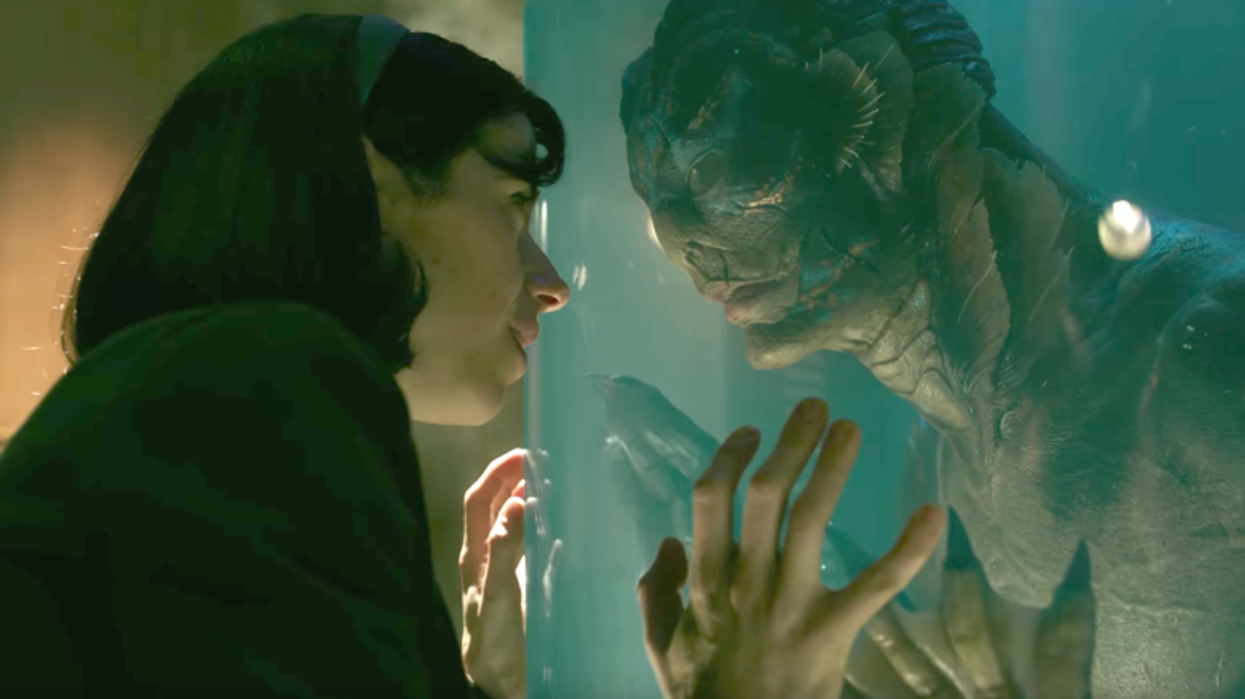How Guillermo Del Toro's Classic Cinema Homages Add Depth to 'The Shape of Water'
With references to old creature features and classic Hollywood musicals, "The Shape of Water" is a love letter to cinephiles everywhere.

If someone asked you which film over the last year has paid homage to the history of cinema the most, I doubt a movie about a love affair between a mute woman and an amphibious humanoid would come to mind, but Guillermo del Toro's The Shape of Water is swimming with references from the Golden Age of cinema, from the creature features of the 30s and 40s to the biblical epics who's massive scale dazzled audiences in the 50s.
In this video essay, the team over at ScreenPrism not only explores these references and homages to the films that ushered in a new era of filmmaking in the United States, but also explains how they work to add depth and context to a story that can only be described as "a fairytale for adults."
[Editors Note: Beware! Spoilers ahead!]
As much as cinephiles will view The Shape of Water as a love letter del Toro wrote to them, the film is more accurately a love letter del Toro wrote to cinema. In his youth, the director became enamored with cult horror films like Frankenstein, The Creature from the Black Lagoon, and King Kong, but while most viewers would classify these titles as Man vs. Monster narratives, del Toro saw them as beautiful love stories about tragically misunderstood creatures.
This is where you can begin to see the framework of The Shape of Water take shape. It's a story founded on the idea that, perhaps, monsters like Frankenstein, King Kong, and the Creature from the Black Lagoon are simply mistaken as dangerous foes threatening the lives of humans, when in reality they may just be trying to understand and communicate their curiosities about a world with which they're unfamiliar.
There are many interesting themes that come through ScreenPrism's reading of del Toro's use of homage, but one that is especially powerful is this idea that the true monster in the film isn't the one that looks like a monster, but instead the one that behaves like one. You can see this narrative in many stories, perhaps most famously in Beauty and the Beast, in which the handsome prince is literally turned into a beast because of his beastly behavior, and then is returned to his human form once he behaves "like a human."

But del Toro puts a spin on this classic narrative by giving the "beast" of his film, the Amphibian Man, plenty of humanity from the beginning. He has the capacity to love and treat others the way he wants to be treated, whereas Colonel Strickland, who is the mirror image of Gaston, has the least humanity out of all of the characters in the film, despite his complete dedication to upholding social norms and preserving the status quo.
Another important aspect of this take on the "the monster is us" device is that del Toro doesn't require the Amphibian Man to assimilate in order to receive that which he seeks, nor does he require Elisa to fight to "see past" his humanoid appearance. He's not forced to become something he's not because she loves him for who he is. In other words, while those in power are examining the threat level of the Amphibian Man's otherness, Elisa embraces and welcomes it, and because of this, their love prevails.
The Shape of Water has certainly struck a chord with viewers and critics alike. Not only is it Certified Fresh on Rotton Tomatoes with a 92%, the film is up for 13 Academy Awards, including Best Picture, Best Director, Best Actress (Sally Hawkins), and Best Screenplay—just one shy of the Big Five. Regardless of accolades and approval ratings, this film is about a lot more than an uncomfortable sex scene. It just might be del Toro's most intimate expression to and about cinema in a time when otherness is just as misunderstood as it ever has been. Maybe, just maybe, cinema can be a bridge.
Source: ScreenPrism











